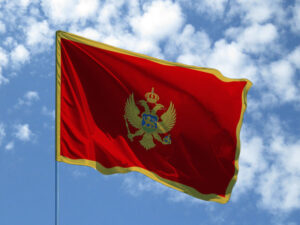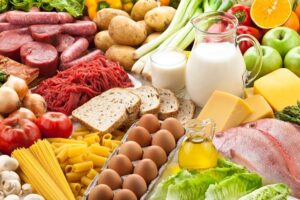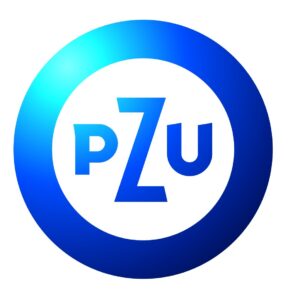
According to the Serbian Economist, Montenegro will soon tighten the visa regime for Russian citizens, bringing it in line with the rules of the European Union. This was announced by the Prime Minister of the country Milojko Spajic.
According to the head of the government, Podgorica intends to fully harmonize visa policy with the EU, which means the abolition of the current order allowing Russians to stay in Montenegro up to 30 days without a visa. Spajic emphasized that the measures will be introduced “very soon” and are part of the course to accelerate European integration and achieve EU membership by 2028.
Russian citizens can now freely enter the country for short periods of time without a visa, which has led to a significant increase in the number of tourists and re-locations from Russia in recent years. Once the regime is tightened, entry will require a visa at consular offices, similar to Schengen rules.
How many Russians now reside in Montenegro
According to official data from the Ministry of Internal Affairs of Montenegro, at the beginning of 2024-2025 in the country officially registered about 20 thousand citizens of Russia with a temporary or permanent residence permit. This makes Russians one of the most numerous foreign communities in the small 600-thousand-strong state.
In addition, according to the calculations of tourism and migration services, several thousand more Russians are in the country without long-term statuses – on tourist stay, on business grounds or in the process of registration of residence permits.
Prime Minister also recalled that Montenegro had previously tightened visa rules for citizens of Armenia, Uzbekistan, Kuwait and Egypt within the framework of adapting visa policy to EU standards. Podgorica fully follows the general foreign and defense policy of the European Union, including sanctions and visa restrictions against Russia.
Observers attribute the upcoming changes to pressure from Brussels following the tightening of the EU visa regime for Russians, as well as Montenegro’s desire to reaffirm its commitment to the European course against the backdrop of membership negotiations.
https://t.me/relocationrs/1792

The Sukha Balka mine (Kryvyi Rih, Dnipropetrovsk region), part of Alexander Yaroslavsky’s DCH group, is commissioning a new iron ore deposit block, Golovnyi, at the Yuvileina mine.
According to a report in the DCH Steel corporate newspaper on Thursday, preparations for the new production capacity at the mine have been completed.
It is specified that in early November, a specialized commission consisting of leading specialists of the enterprise and representatives of the State Labor Service of Ukraine signed an act on the commissioning of mining block 13-17. It is located in the Golovnoy deposit at a depth of 1,420 meters, sub-level 3A.
The block’s projected reserves amount to 221,300 tons of ore with an iron content of 60.75%.
“This is a large block that we have been preparing for production for almost a year, and its reserves will be enough for six months of stable operation of the enterprise,” said Mykola Puntus, chief engineer of the Yuvileina mine.
It is also reported that at the Tsentralna mine, the drainage pond at the -1260 m and -1340 m levels has been repaired. The diameter of the new pipeline between these underground levels is 325 mm. The Tsentralna mine is part of the Yuvileina mine. A drainage pond is a hydraulic engineering structure designed to collect water and is a critical part of the mine drainage system.
The Sukha Balka mine is one of the leading enterprises in the mining industry in Ukraine. It extracts iron ore using underground mining methods. The mine includes the Yuvileina and Frunze mines.
The DCH Group acquired the mine from the Evraz Group in May 2017.
DCH, Mine, ORE, SUKHA BALKA, Yuvileina

The housing price index in Ukraine for July-September 2025 stands at 112%, while for the same period in 2024, the figure was 111.7%, according to the State Statistics Service (SSS).
According to its data, in the primary market, housing prices slowed their growth to 12.8% in the third quarter of 2025, compared to 14.1% in the third quarter of last year. One-room apartments saw the highest price increase — 13.3%. The price increase for two-room apartments was 13.3%, and for three-room apartments – 11.7%.
In contrast, prices in the secondary market accelerated their growth to 11.5% in July-September 2025, compared to 10.5% in the same period of 2024. One-room apartments rose in price by 12.5%, and two- and three-room apartments by 11.4%.
According to the statistics agency, compared to the previous quarter, housing prices rose by 0.3%, with the primary market rising by 0.2% and the secondary market by 0.3%.
According to the State Statistics Service, in the third quarter of 2025, prices in the primary market rose by 9.1% for one-room apartments compared to the fourth quarter of 2024, by 8% for two-room apartments, and by 7.4% for three-room apartments. In the secondary market, they rose by 9.1%, 7.8%, and 7.6%, respectively.
Overall, housing prices rose by 12.7% in the first three quarters compared to the same period last year. In the primary market, the increase was 14.8%, and in the secondary market, it was 11.6%.
As reported, according to the State Statistics Service, housing prices in 2024 rose by 12.7%.
The State Statistics Service noted that the figures do not include temporarily occupied territories and parts of territories where hostilities are (were) ongoing.

Das Volumen der landwirtschaftlichen Produktion ging im Zeitraum Januar bis Oktober 2025 gegenüber dem gleichen Zeitraum des Jahres 2024 um 12,4 % zurück, teilte das Staatliche Statistikamt mit.
So lag der Index der landwirtschaftlichen Produktion in der Ukraine nach den Ergebnissen der ersten zehn Monate dieses Jahres bei 87,6 % gegenüber Januar bis Oktober des Vorjahres. Insbesondere erreichte der Index für pflanzliche Produkte 85,7 % und für tierische Produkte 96,5 %.
Etwas größere Verluste verzeichneten landwirtschaftliche Betriebe, deren Produktion 85,1 % des Vorjahresniveaus betrug. Dabei erreichte der Index für pflanzliche Erzeugnisse 82,5 % und für tierische Erzeugnisse 99,0 %.
Gleichzeitig ist der Indikator in den privaten Haushalten besser – 93,6 %. Bei pflanzlichen Erzeugnissen betrug er 93,9 %, bei tierischen Erzeugnissen 92,5 %.
Ein deutlicher Rückgang der Produktion wurde in der Region Donezk verzeichnet, wo sie nur 56,6 % des Vorjahreswertes erreichte. Ein relativ deutlicher Rückgang wurde auch in den Regionen Cherson (69 %), Dnipropetrowsk (77,3 %) und Chmelnyzkyj (77,0 %) verzeichnet.
Nur eine Region verzeichnete eine positive Entwicklung. In der Region Transkarpatien betrug die Produktion landwirtschaftlicher Erzeugnisse 103,5 %. Dabei wurde ein Wachstum der pflanzlichen Produktion in der Region von +1,7 % und der tierischen Produktion von +7,2 % verzeichnet.

Poland’s PZU will invest at least PLN 4 billion in the Innovate Poland program to stimulate the development of innovative domestic companies with high potential, according to the PZU website.
“At least PLN 4 billion will be invested through private equity and venture capital funds in about 250 companies. This is the first phase of the project, conceived as a platform to which additional institutions and investors will join in the next phases to jointly scale investments,” the information emphasizes.
In addition, it is reported that the Innovate Poland concept is based on the experience of the French “Plan Tibi”, which has significantly strengthened the French market for innovative investments in recent years. The budget of the first phase of Innovate Poland is PLN 4 billion, provided by development institutions: the Polish Development Fund (PFR), Bank Gospodarstwa Krajowego (BGK), the European Investment Fund (EIF) and Powszechny Zakład Ubezpieczeń (PZU) – the first commercial partner of the project.
The program is implemented under the patronage of the Minister of Finance and Economy. Its formula is designed to allow the addition of additional institutions and investors in subsequent phases, systematically increasing the scale of financing and strengthening the economic impact of the program.
PZU ((Powszechny Zakład Ubezpieczeń Spółka Akcyjna) is a Polish insurance company, one of the largest insurance companies in Central and Eastern Europe. It offers a wide range of insurance services, including life and property insurance.

Gold prices are declining on Thursday amid the strengthening of the dollar before the publication of statistical data on the U.S. labor market. By 14:02 Q2 quotations of December gold futures on the Comex exchange fell by about 0.5% to $4061.5 per ounce.
The U.S. Department of Labor will release a report on the U.S. labor market for September at 15:30 Q2. The report is expected to show job growth of 50,000 and unemployment remaining at 4.3%, Trading Economics noted. It is published late due to the shutdown.
ICE’s DXY index, which shows the dollar’s performance against six currencies (euro, Swiss franc, yen, Canadian dollar, pound sterling and Swedish krona), added about 0.1%.
Meanwhile, analysts at UBS upgraded their forecast for gold to $4500 an ounce from $4200 an ounce by mid-2026. They believe that gold will be supported by the Federal Reserve’s easing monetary policy, as well as geopolitical uncertainty, increasing demand for protective assets.
Earlier, the Experts Club think tank presented an analysis of the world’s leading gold-producing countries in its video on Youtube channel – https://youtube.com/shorts/DWbzJ1e2tJc?si=YuRnDiu7jtfUPBR9.